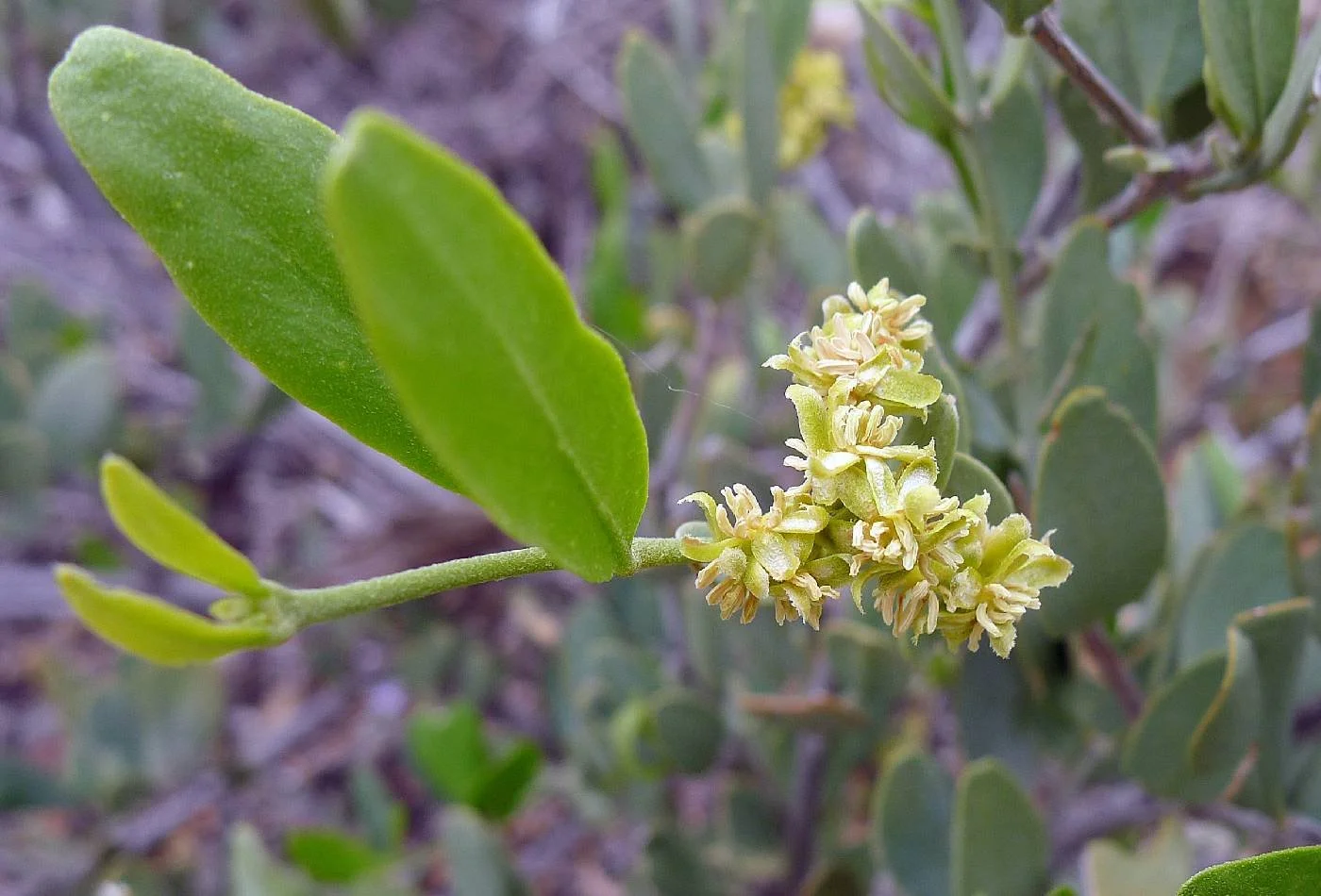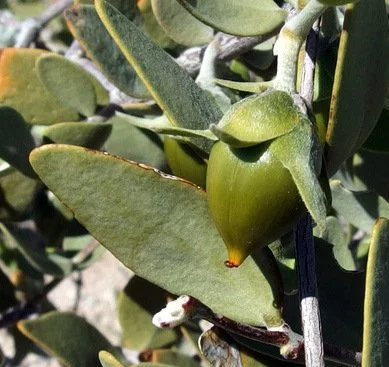Simmondsia chinensis
Jojoba
Family: Simmondsiaceae
Evergreen shrub typically 4x4’. Plants are dioecious, meaning separate male and female plants. If you are growing this for the fruits, make sure you have both or that there are plants in the neighborhood.
Grow in full sun, with low water, hardy to 10° F.
Larval food for the Electra buckmoth (Hemileuca electra), American Dried-Plant Moth (Idaea bonifata), and a tortrix moth, Epinotia kasloana. This is one of the few plants left alone by animals (most of the time). The foliage is too high in tannins for most herbivores, though there are some rare documented cases of rabbits trying a nibble. Though not a food plant for wildlife, it’s a great habitat plant for small birds.
This plant has a become an important economic crop, though thanks to modern capitalism, India is enjoying those economic benefits: the oil of the jojoba nut possesses an oil that doesn’t degrade in high heat, and doesn’t succumb to bacterial degradation. Thus, it is used in cosmetics and used as an industrial lubricant—before the discovery of the nature of jojoba oil, the sperm whale was the only source for this industrial lubricant. So thanks to the jojoba, we’ve decreased pressure on the sperm whale.
Used medicinally for sores, as a cathartic, as a coffee like beverage, the nuts are made into cakes, eaten fresh, and made into a nut butter—the nuts are rich in tannic acid, so too much should not be eaten, or methods for leaching out the tannins should be used.
A funny thing about the botanical name—despite its scientific name Simmondsia chinensis, the plant is not native to China. The botanist Johann Link originally named the species Buxus chinensis, after misreading a collection label "Calif", referring to California, as "China". The current genus, Simmondsia, is named for Thomas Simmonds (1767-1804), an English botanist.
Found on dry hills, outwash slopes and along arroyos in gravelly or rocky soils from 1,500-5,000 ft. in Arizona, southern California, Baja California, and Sonora.
Photo by Mountain States Wholesale Nursery
With regular plants, we don’t know what sex they will be until they are fairly large (they’ll begin to bloom when about 15g size—most people plant 1-5g plants). So we don’t know the sex of the seed-grown plants until they bloom. However, the asexually propagated variety ‘Estrella’ is a female selection made by Jalisco Jojoba Farming.

Female flowers, Photo by Paul Rothrock, SEINET

Male flowers, photo by Fred Fisher, SEINET

Fruit of jojoba, photo by Stephen Hale, SEINET

